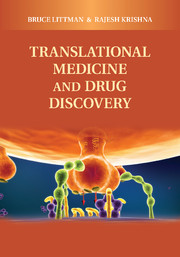Preface
Published online by Cambridge University Press: 04 April 2011
Summary
Drug discovery and development has evolved in an accelerated fashion during the latter half of the 20th century and the first decade of the 21st century from the serendipity of folk medicine and herbal remedies to a more refined observational and hypothesis-driven biological approach and finally to the present-day translational approach that relies on an understanding of disease and human biology at a molecular level. Advances in information, molecular and biomarker technologies, and quantitative systems pharmacology have further enabled this rapid evolution. Along with these important advances and changes, however, has come an unsustainable attrition rate that has increased the cost of discovering and developing new drugs and threatens the future of the pharmaceutical industry as we have known it. The combination of modern, science-driven translational drug discovery and development and unsustainable attrition rates has created a new reality that has had its greatest impact on the earliest stages of drug development. This reality is mandating changes in strategies, technologies, and disciplines in an effort to improve confidence and the success rate of new drug targets, mechanisms, and molecules. Ultimately, these changes are designed to affect the endgame: improved productivity in terms of new drug approvals for unmet medical needs at a sustainable cost from the modern drug discovery engine.
One of the most significant changes embraced by the pharmaceutical and biotech industry is the creation and evolution of the discipline of translational medicine.
- Type
- Chapter
- Information
- Translational Medicine and Drug Discovery , pp. xix - xxPublisher: Cambridge University PressPrint publication year: 2011



